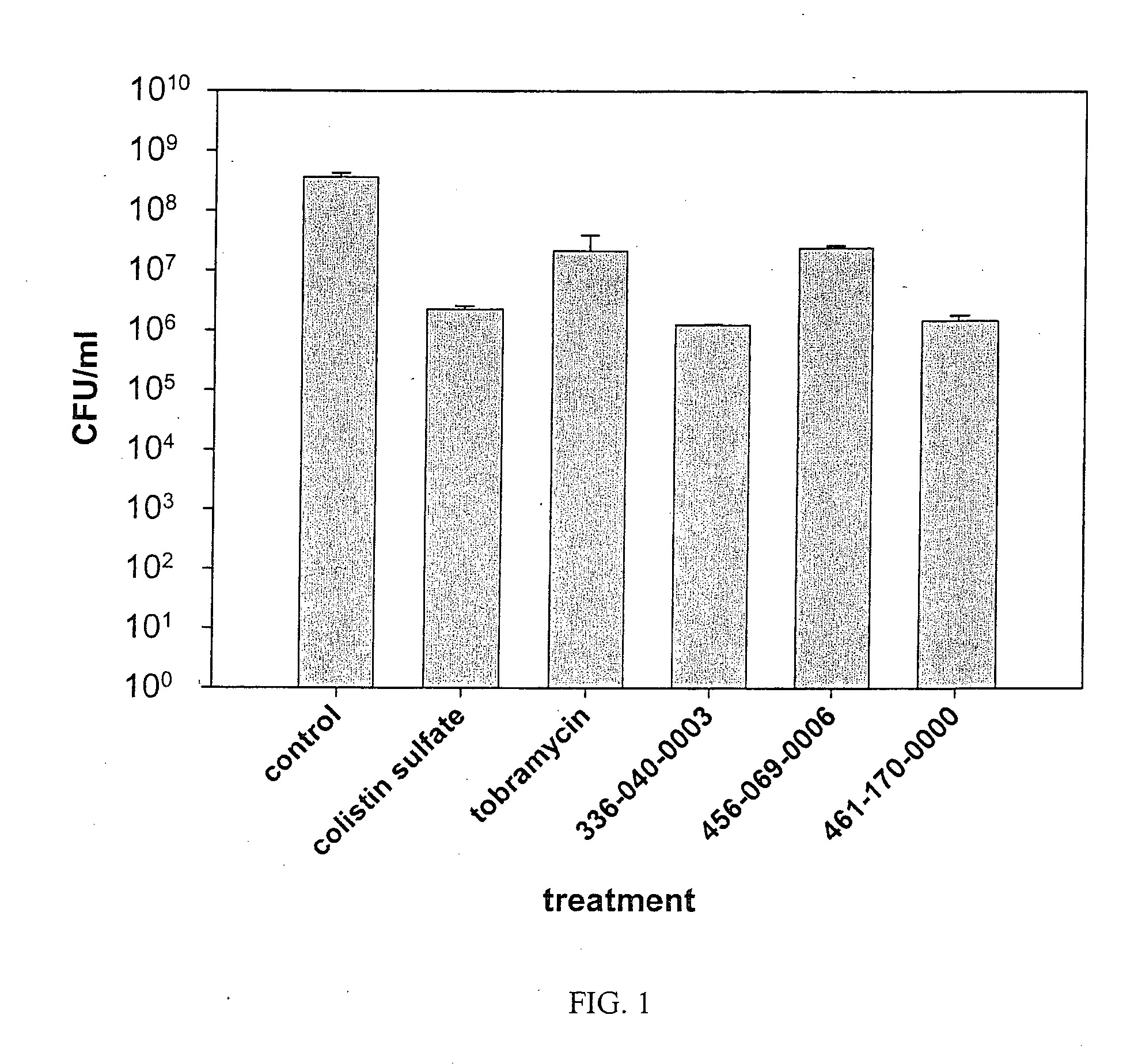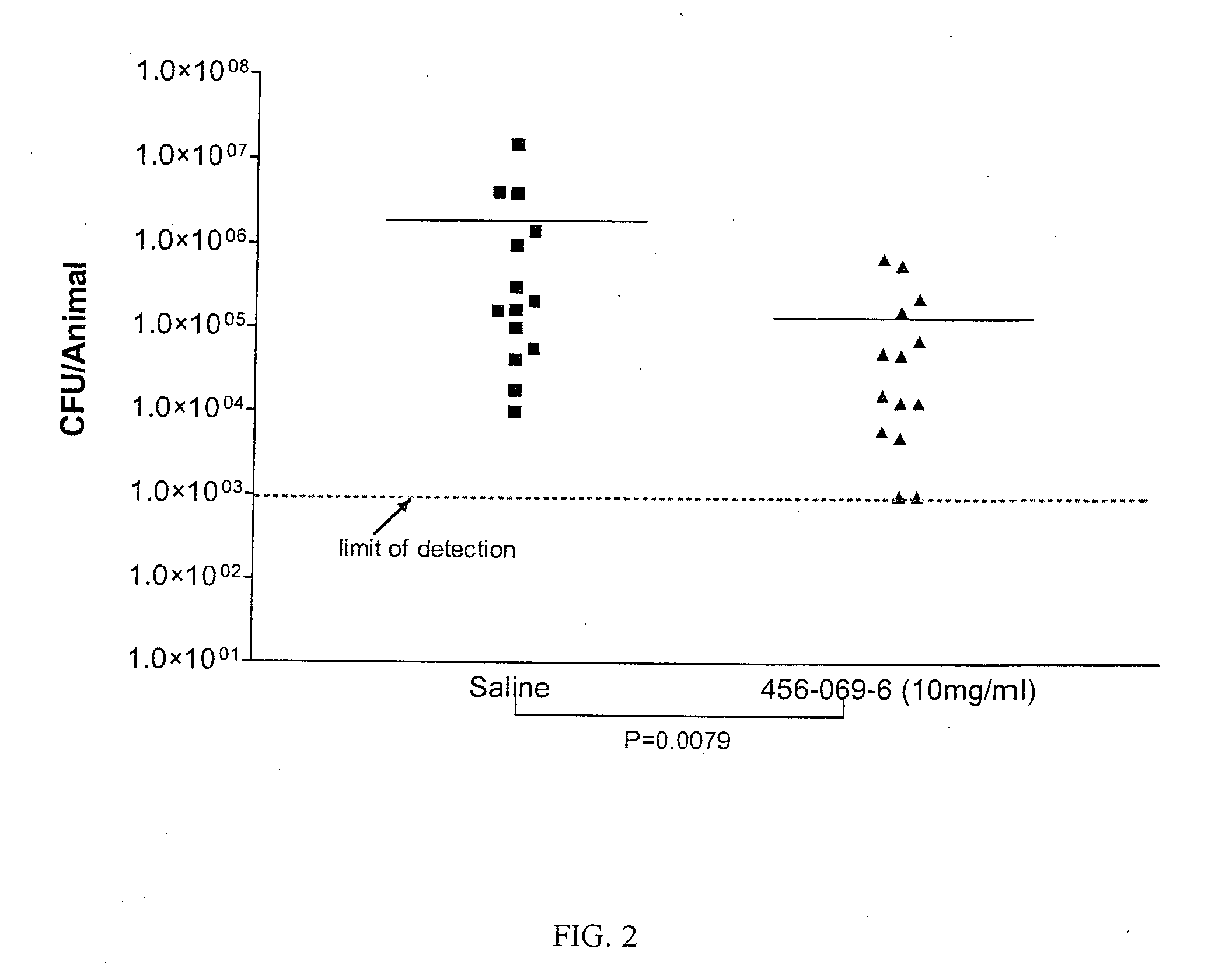Polyionenes for treating infections associated with cystic fibrosis
a cystic fibrosis and polyionine technology, applied in the field of polyionine for treating infections associated with cystic fibrosis, can solve the problems of microbial infections, inability to digest food and nutritional deficiencies, and excess sodium in the cells and tissues, and achieve low toxicity to warm-blooded animals, the effect of pathogenic resistan
- Summary
- Abstract
- Description
- Claims
- Application Information
AI Technical Summary
Benefits of technology
Problems solved by technology
Method used
Image
Examples
example 1
Preparation of poly(hexamethylenebiscyanoguanidine-alt-4,9-dioxadodecane) (XXVII)
[0070] Hexamethylenebiscyanoguanidine (3.99 mmoles, 1.00 g) and 4,9-dioxa-1,12-dodecanediamine (3.99 mmoles, 0.848 ml) were added to a 40 ml vial with a septa-cap followed by 2 equivalents of concentrated HCl. The mixture was heated to 135-145° C. in a shaker overnight. The resulting clear yellow, brittle solid was dissolved in water and purified by centrifugation through a 3K Macrosep filtration membrane.
example 2
Preparation of poly(4,4′-trimethylenebis(1-methylpiperidinium)-alt-octane) (X)
[0071] 4,4′-Trimethylenebis(1-methylpiperidine)-alt-1,8-Dibromooctane was prepared by dissolving 4,4′-Trimethylenebis(1-methylpiperidine) (39.9 ml) in 30 ml of DMF in a 250 ml Erlenmeyer flask. 1,8-Dibromooctane (27.63 ml) was also added to the flask. The reaction was purged with nitrogen, covered with a septum, and stirred with a magnetic stir plate. The initial solution was clear. After approximately 20 minutes of stirring the reaction exothermed and solidified. A light yellow solid polymer formed and was left to further polymerize for a week. The polymer was dissolved in ˜300 ml of deionized water and dialyzed (3500 molecular weight cut-off) in water 3× and 1× in water / MeOH 70% / 30%.
example 3
Preparation of poly(4-(dimethylamino)phenyldiphenylphosphonium-alt-dodecane) (XXXI, where R10 is dodecyl)
[0072] 4-(Dimethylamino)phenyldiphenylphosphine (1.73 mmoles, 0.529 g) and 1,12-dibromododecane (1.73 mmoles, 0.569 g) were dissolved in DMF (1 ml) and shaken for 1 week. The resulting viscous liquid was diluted with water and purified by centrifugation through a 3K Macrosep.
PUM
| Property | Measurement | Unit |
|---|---|---|
| particle size | aaaaa | aaaaa |
| particle size | aaaaa | aaaaa |
| particle size | aaaaa | aaaaa |
Abstract
Description
Claims
Application Information
 Login to View More
Login to View More - R&D
- Intellectual Property
- Life Sciences
- Materials
- Tech Scout
- Unparalleled Data Quality
- Higher Quality Content
- 60% Fewer Hallucinations
Browse by: Latest US Patents, China's latest patents, Technical Efficacy Thesaurus, Application Domain, Technology Topic, Popular Technical Reports.
© 2025 PatSnap. All rights reserved.Legal|Privacy policy|Modern Slavery Act Transparency Statement|Sitemap|About US| Contact US: help@patsnap.com



